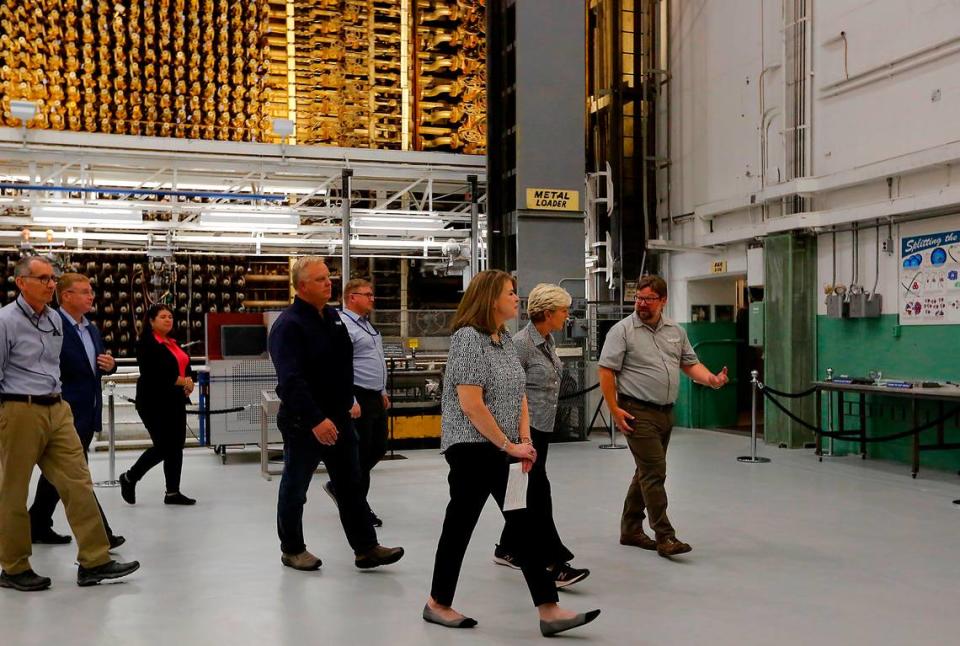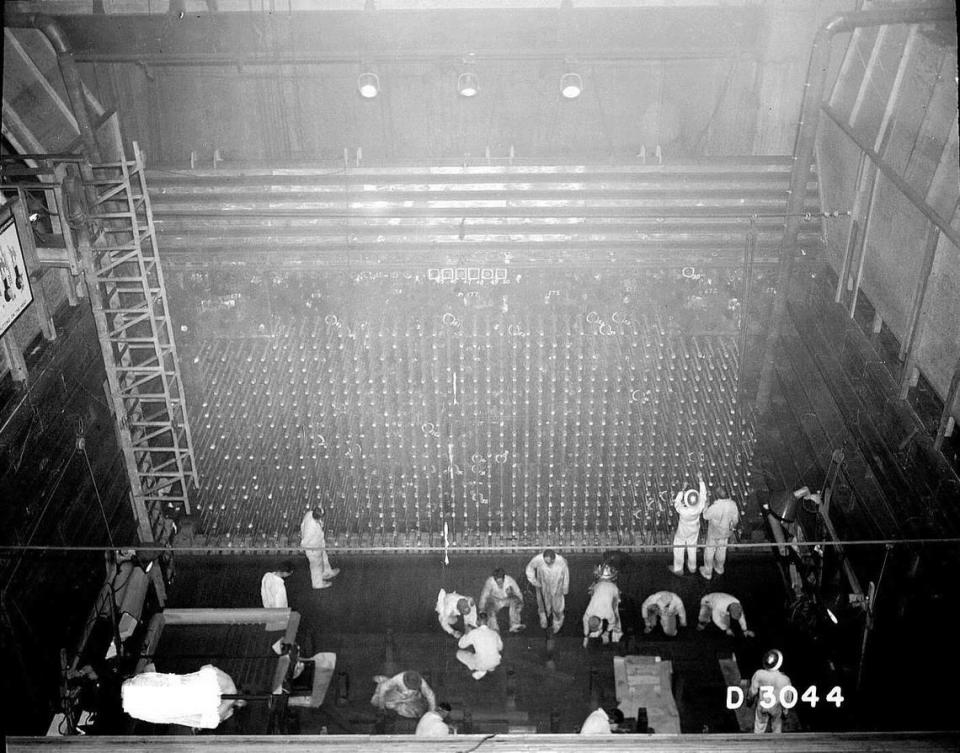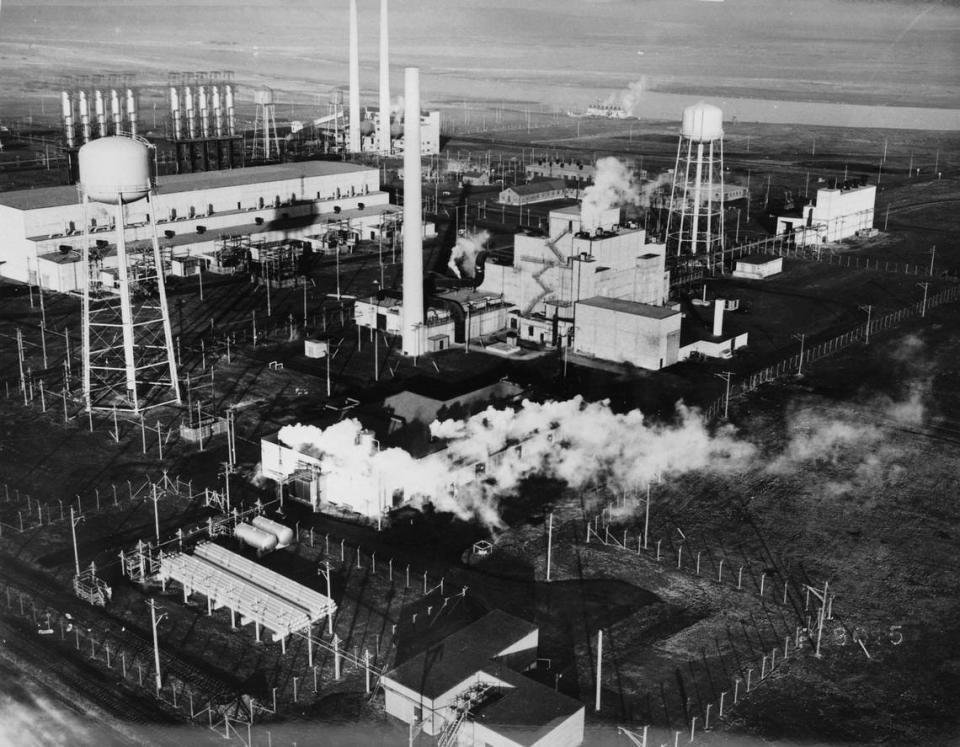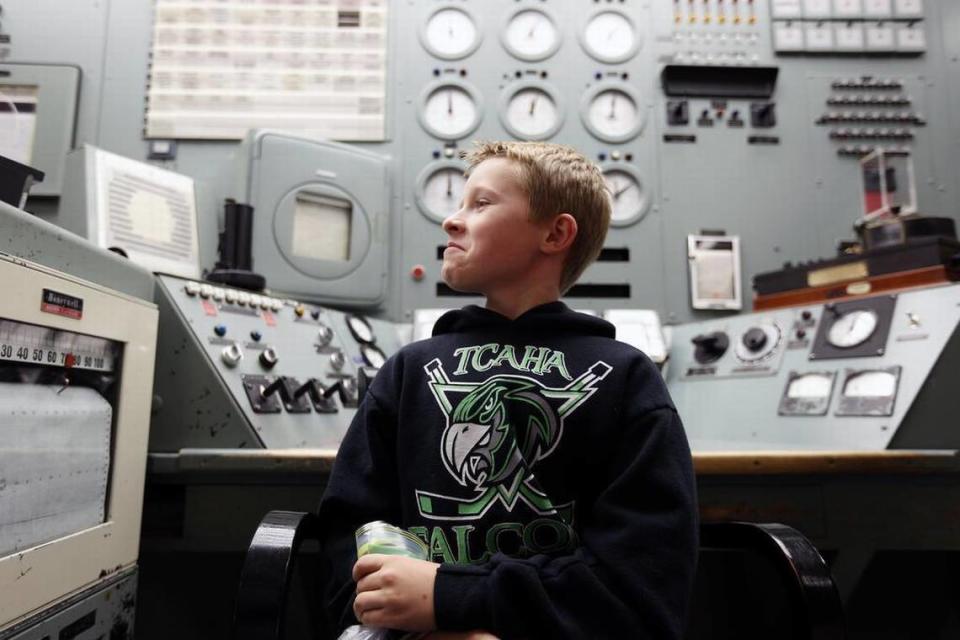Historic B Reactor in Eastern WA shutting down tours for 2 years. Why it’s closing
If you’ve been planning to tour Hanford’s historic B Reactor, part of the Manhattan Project National Historical Park, don’t procrastinate.
After the current tour season ends Nov. 18, no more tours will be scheduled until at least spring 2026.
Eighty years after construction of the world’s first full-scale reactor began, it’s showing its age.
The Department of Energy will be closing the reactor to the public to replace its roof and make some other repairs and improvements.
DOE is sorry that the reactor will need to close during the work, but “parks are forever,” said Colleen French, National Park program manager.
“It is so important that we are making the investment now so that we can make sure this place is around for future generations,” she said.
B Reactor was built in less than a year as the Allies raced to develop an atomic bomb before Nazi Germany.
The reactor produced the plutonium used to fuel the first detonation of a nuclear weapon, the Trinity Test in New Mexico, as moviegoers are seeing re-enacted in “Oppenheimer.”
B Reactor also produced plutonium for the atomic bomb dropped on Nagasaki, Japan, Aug. 9, 1945, just weeks after the Trinity Test. Japan surrendered Aug. 15, 1945, ending World War II.
There was nothing like B Reactor before it was built and nothing has been the same since, DOE officials have said.

It launched the Atomic Age, including the atomic weapons build-up of the Cold War. It also signaled a new way to make clean energy and created the field of nuclear medicine and the nuclear technology industry.
Visitors to B Reactor now can walk through the reactor that looks much as it did during WWII.
They can gaze up at the towering face of the reactor where fuel was loaded for the first time in 1944, and they can sit at the controls that started up the reactor for the first time in 1945. Those gathered in the control room were unsure if a reactor would produce plutonium or would create a runaway chain reaction that would blow the plant up.
In the last full tour season before COVID-19 closures, about 10,000 people toured the reactor or took a companion tour to learn about life at what is now Hanford before the eviction of homeowners and tribes in 1943 to make way for the secret wartime project.

Touring Hanford’s B Reactor
This year the number of people touring the Hanford nuclear reservation site portion of the Manhattan Project Historical Park is on track to top that. The multi-site park also includes Manhattan Project sites in Los Alamos, New Mexico, and Oak Ridge, Tenn.
So far this year people from more than 30 countries and from every state except Rhode Island have taken one of the Hanford tours. The tours are open to all ages.
Already most tour seats are claimed through August and the other tours in October and November are starting to fill.
You can register for a tour at tours.hanford.gov/HistoricTours or take your chances and see if there are any no-shows for a tour, freeing up a site on the bus that takes participants to a closed portion of the nuclear reservation. The tours leave from 2000 Logston Blvd. in Richland.
Supporters of B Reactor have worked for more than a decade to get Congressional appropriations to allow DOE to assess the condition of B Reactor and make repairs. Although it is part of a national park, DOE continues to own the reactor and provides public access.

An inspection of B Reactor by Wiss, Janney, Elstner Associates, which has expertise in historic preservation, found it “in darn good shape for its age,” French said.
That is in part because of the dry and mostly temperate climate of Eastern Washington and decades without staffing of the reactor, she said.
B Reactor repairs needed
“But there are definitely signs of water intrusion and there is some wear on the structural steel in some areas, as well as some leaching of water through the internal cinder blocks — the interior wall cinder blocks,” she said.
“From a structural standpoint you don’t want your block walls to be conduits for water and that’s why it is important to get to it now,” she said. “We don’t want it to degrade beyond what it has already.”
Work will start in early 2024, with $26 million Congress has already appropriated, but the cost of the project has yet to be determined. Central Plateau Cleanup Co., a DOE Hanford contractor, will be in charge.
Five projects are planned:
▪ The roof will be replaced after leaks were detected, including at the front face of the reactor and the control room. The leaky roof is the issue that started concerns about the reactor building’s condition.
▪ Mortar will be replaced between the reactor’s exterior concrete masonry blocks.
In some places as the building was expanded or was repaired grout rather than mortar was used.
That grout will be drilled out and replaced with mortar that will look appropriate for World War II but that is stronger.
▪ A waterline under the reactor that has leaked will be moved.
▪ The WWII era electrical system for operating the reactor will be replaced with a smaller, more energy efficient and easier-to-maintain system appropriate for the tour program.
▪ A semi-permanent restroom will be added outside the reactor.
B Reactor and STEM tourism
“There’s a lot of pride in the Tri-Cities about the role our community played in helping the United States win World War II and the Cold War,” said David Reeploeg, vice president of federal programs for the Tri-City Development Council.

“The Manhattan Project National Historical Park is a great way to tell that story, and the B Reactor is definitely a highlight of the park,” he said.
B Reactor has served as the anchor for heritage and science, technology, engineering and mathematics, or STEM, tourism in the Tri-Cities.
It attracts visitors nationally and internationally, who then also may tour other attractions such as the LIGO reactor on unused Hanford land, which detects gravitational ripples through space and time from violent events in outerspace, and the Reach museum in Richland.
Those visitors help fill Tri-Cities hotels and boost business at wineries and restaurants, Reeploeg said.
B Reactor also helps inspire future generations to pursue STEM careers, he said.
DOE has been working with community leaders to identify ways to maintain interest in B Reactor during the years it is closed to tours.
DOE is partnering with the National Park Service to create a virtual tour of B Reactor, which will also include updates on progress on the work at B Reactor.
The pre-war historic tours of Hanford will continue and likely will have a stop added outside B Reactor to provide some information about its role in WWII.
The buildings on that pre-Manhattan Project tour, including the Bruggemann Warehouse and the abandoned Hanford High School, also need preservation work and TRIDEC and other organizations are discussing the need with Congressional officials.

